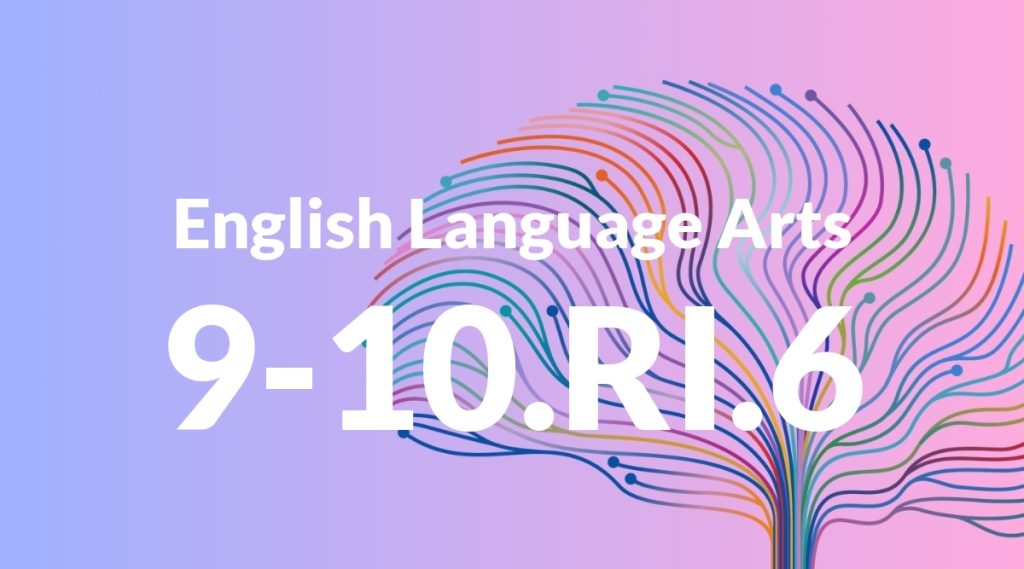Standard: 9-10.RI.6 – Determine an author’s point of view or purpose in a text and analyze how an author uses rhetoric to advance that point of view or purpose.
Grade level: Grade 9-10
Subject: English Language Arts
Domain: Reading: Informational Text
Teacher Overview
This standard focuses on students’ ability to determine an author’s point of view or purpose in a text and analyze how rhetoric is used to advance that point of view or purpose. This skill is crucial for developing critical thinking and analytical skills, which are essential for understanding complex texts and for effective communication. Students should have a foundational understanding of rhetorical devices, the ability to identify an author’s purpose, and the skills to discern different points of view in a text.
Mastering this standard will enable students to critically evaluate texts, understand and critique arguments, and apply rhetorical analysis to various media. These skills are foundational for advanced literary analysis and effective communication.
Common Misconception 1
A common misconception is that the author’s point of view is always explicitly stated. This is incorrect because authors often use subtle cues and implicit messages to convey their perspective.
Intervention 1
To address this, teach students to look for context clues, tone, and word choice that hint at the author’s point of view. Provide practice with texts where the author’s perspective is not directly stated.
Common Misconception 2
Another misconception is that rhetoric is only used in political speeches. This is incorrect as rhetorical devices are used in various forms of communication including advertisements, editorials, and everyday conversations.
Intervention 2
Introduce students to a variety of texts and media where rhetorical strategies are employed. Encourage them to identify and analyze these strategies in different contexts.
Prerequisite Knowledge
Students should have a basic understanding of rhetorical devices, author’s purpose, and point of view. They should also be familiar with identifying main ideas and supporting details in a text.
Subsequent Knowledge
After mastering this standard, students will be able to critically evaluate complex texts, understand and critique arguments, and apply rhetorical analysis to a variety of media. This will prepare them for advanced literary analysis and effective communication skills.
Instructional Activities
- Analyze a political speech for rhetorical strategies and author’s purpose.
- Evaluate an editorial for bias and rhetorical devices.
- Identify rhetorical strategies in advertisements and discuss their effectiveness.
- Critique a news article for the author’s perspective and use of rhetoric.
- Examine historical documents for the author’s purpose and rhetorical techniques.




